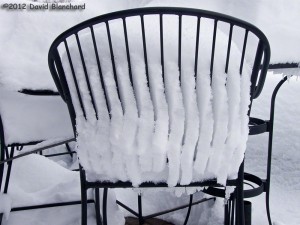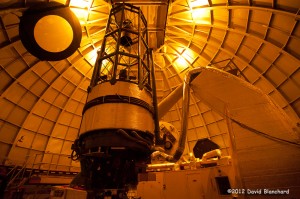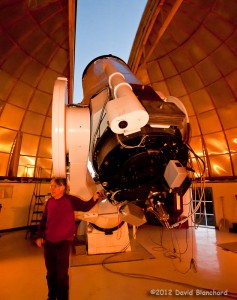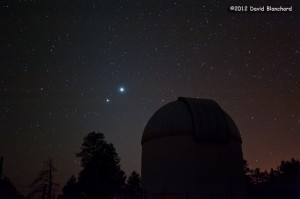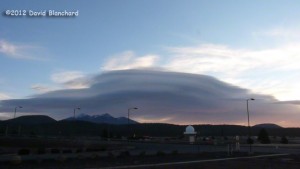I expect that this will be my last chance to photograph the Moon with Venus and Jupiter before they move away from each other. The two planets are drawing away from each other each day from their closest point on March 12 and 13.
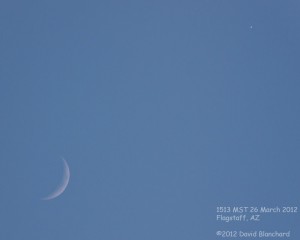
Venus has been bright enough to be visible in the sky during the day IF you know where to look. That’s not easy. But today the crescent moon — which IS easy to see — was very close to Venus. So, find the Moon and find Venus. This image was taken mid afternoon on a beautiful early spring day in northern Arizona.
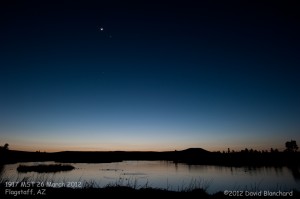
After sunset the triangle of Venus, Jupiter, and Mars put on quite a show over the reflective waters of the Kachina Wetlands near Flagstaff, Arizona. The ducks had just recently alighted on the waters for the evening and their trails through the water are easily visible.
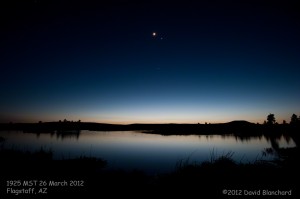
And as the sky darkened the triplet shone even more brightly above the now quiet water.
